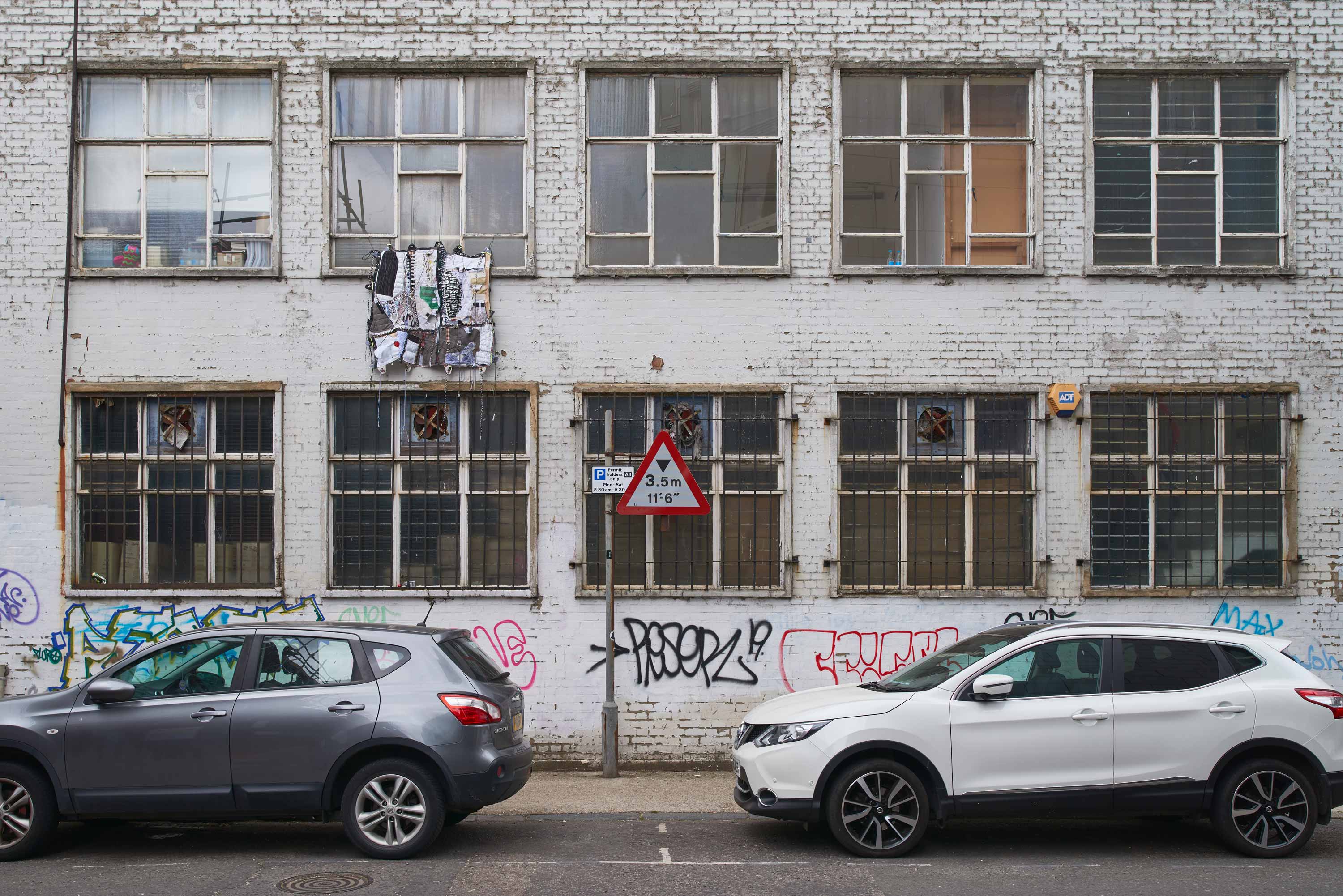A FEW NOTES ON THE OUTDOOR ASSEMBLAGE
0.1 Combining the decorative and traditional technique of quilting with heavy duty and utilitarian details seen in sports and outdoor fashion styles, this textile assemblage explores the boundaries between functionality and decoration.
0.2 The layers of garments mutate the notion of memory and identity with industrial mass production by emphasising the fleetingness of transition and destruction of apparel.
0.3 A myriad of fragments of recycled garments ranging from sportswear, handbags, old running trainers, waterproof puffer jackets, blazers and t-shirts are patch worked together. Details of these manufactured garments are visible on the surface; zippers, buttons, pockets, laces, buckles and labels. Signifiers that point to the origin of the garments, where they were produced, how they were intended to be utilised.
0.4 Five separate patches are joined together through closing mechanisms seen in lingerie as well as hiking gear, weaving climbing rope and bungee cord through dozens of eyelets. The intensity of layering and stitch in this piece is almost compulsive, every inch is vicariously elaborated upon by hand as well as machine.
0.5 In the confined space of my bedroom this piece has taken on a different intensity provoked by the conditions of the quarantine. It reaches a level of detailed obsession that alternates from the usual quick and unfinished assemblages that characterise my work. Bits of my own wardrobe have gradually made their way into this piece, combined with scraps from previous work and my ever-expanding collection of second hand and discarded garments.
0.6 The surface of the work becomes almost voracious in its attempt to incorporate scraps and debris into itself. A fragment of text kept playing in my mind throughout the process of making, I read it in The Bell Jar by Sylvia Plath; “Once when I visited Buddy I found Mrs Willard braiding a rug out of strips of wool from Mr Willard’s old suits. She’d spent weeks on that rug, and I had admired the tweedy browns and greens and blues patterning the braid, but after Mrs Willard was through, instead of hanging the rug on the wall the way I would have done, she put it down in place of her kitchen mat, and in a few days it was soiled and dull and indistinguishable from any mat you could buy for under a dollar in the Five and Ten.”
0.7 It reminds me of the porous sense of self that I experienced during quarantine. How the boundaries between the house, wardrobe and myself began to disintegrate. The amorphous piece resembles this feeling of disintegrating into your direct environment. The quilt, hanging from a construction in the windowsill of the building in Herald Street seems to morph into its environment almost seamlessly. After a few weeks of remaining outside, bleaching in the sun, getting stained by rain and smog, the piece will blend in even more. I wonder if we will forget to deinstall it, having become indistinguishable from the fabric of the street.

